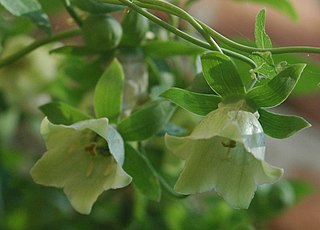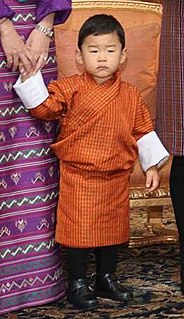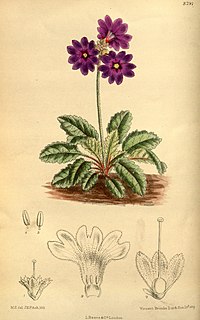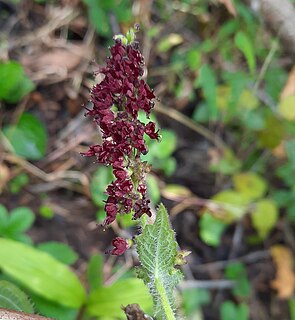
The Himalayas, or Himalaya ; Sanskrit: himá and ā-laya, is a mountain range in South and East Asia separating the plains of the Indian subcontinent from the Tibetan Plateau. The range has many of Earth's highest peaks, including the highest, Mount Everest, at the border between Nepal and China. The Himalayas include over fifty mountains exceeding 7,200 m (23,600 ft) in elevation, including ten of the fourteen 8,000-metre peaks. By contrast, the highest peak outside Asia is 6,961 m (22,838 ft) tall.

The Indomalayan realm is one of the eight biogeographic realms. It extends across most of South and Southeast Asia and into the southern parts of East Asia.

Bhutan, officially known as the Kingdom of Bhutan, is a landlocked country in the Eastern Himalayas. It is bordered by China to the north and India to the south. Nepal and Bangladesh are located in proximity to Bhutan but do not share a land border. The country has a population of over 754,000 and a territory of 38,394 square kilometers which ranks 133rd in terms of land area. Bhutan is a constitutional monarchy with Mahayana Buddhism as the state religion.

Dysoxylum is a flowering plant genus of trees and shrubs from the mahogany family, Meliaceae.

Codonopsis is a genus of flowering plant in the family Campanulaceae. As currently recognized, Codonopsis includes two other groups sometimes separated as distinct genera, i.e. Campanumoea and Leptocodon. The enlarged genus Codonopsis is widespread across eastern, southern, central, and southeastern Asia, including China, Japan, the Russian Far East, Kazakhstan, the Indian Subcontinent, Iran, Indochina, Indonesia, etc.

The Eastern Himalayan broadleaf forests is a temperate broadleaf forest ecoregion found in the middle elevations of the eastern Himalayas, including parts of Nepal, India, and Bhutan. These forests have an outstanding richness of wildlife.
Energy in Bhutan has been a primary focus of development in the kingdom under its Five-Year Plans. In cooperation with India, Bhutan has undertaken several hydroelectric projects whose output is traded between the countries. Though Bhutan's many hydroelectric plants provide energy far in excess of its needs in the summer, dry winters and increased fuel demand makes the kingdom a marginal net importer of energy from India.
Renewable energy in Bhutan is the use of renewable energy for electricity generation in Bhutan. The renewable energy sources include hydropower.
Cardamine gouldii is a plant species endemic to Bhutan. It is known only from a single specimen in the herbarium of Kew Botanic Garden in London, collected in 1938 in the Bumthang District.

Jigme Namgyel Wangchuck is the first child and heir apparent of King Jigme Khesar Namgyel Wangchuck of Bhutan and his wife, Queen Jetsun Pema. He has been the Crown Prince of Bhutan since his birth in 2016. His name was announced on 16 April 2016. Prior to the announcement, he was known only as The Gyalsey, which means "prince". Before his birth, his paternal uncle Prince Jigyel Ugyen of Bhutan was the heir presumptive to King Jigme Khesar Namgyel. In honor of his birth, 108,000 trees were planted by thousands of volunteers in Bhutan. He is expected to become the sixth Druk Gyalpo.

Rhododendron kesangiae is a rhododendron species endemic to Bhutan, where it grows at altitudes of 2890–3450 meters in the Fir and Hemlock forests. It is called Tala (ཏ་ལ) in Dzongkha. It is a tree that typically grows to 15 meters in height, with leaves that are broadly elliptic to almost obovate, and 20-30 x 10–16 cm in size. Flowers are rose pink, fading to purple.
The production of Bhutan wine is reported to have first been attempted in the 1990s, with the introduction of an experimental vineyard at Paro near Thimpu, the capital of Bhutan. Australian wine company, Taltarni, is believed to have provided technical help, but it is not known whether any wine was successfully produced.
Pedicularis cacuminidenta is a species of flowering plant endemic to Bhutan.
Pedicularis dhurensis is a species of flowering plant endemic to Bhutan.
Pedicularis elephantiflora is a species of flowering plant endemic to Bhutan.

Allium rhabdotum is a species of flowering plant endemic to Bhutan.

Primula chasmophila is a species of flowering plant in the Primulaceae family. It is endemic to Bhutan.

Isodon atroruber is a species of flowering plant endemic to Bhutan. It differs from other species of Isodon in having deep wine red flowers in narrow panicles.
Eulophia stenopetala is a species of orchid endemic to Bhutan. The only material on this species from Bhutan is the holotype specimen collected by William Griffith in Bhutan in 1838 and resides at the Kew Herbarium with catalogue number K000852991. Another specimen without any information on its location is also available at the Naturalis Biodiversity Center with catalogue number U.1466607. The plant is currently considered extinct as numerous attempts to find it in the type locality failed.
Artemisia bhutanica is a species of mugwort endemic to the Bhutan Himalayas.











